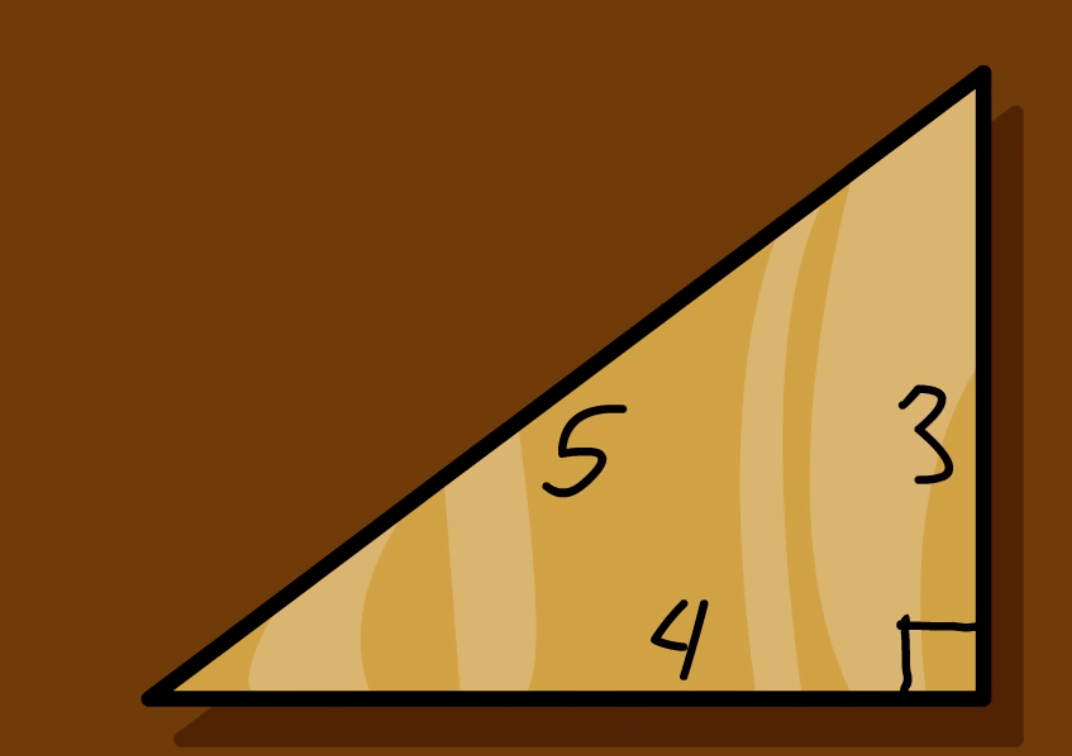Pythagorean Theorem Lesson Plan: Geometry
*Click to open and customize your own copy of the Pythagorean Theorem Lesson Plan.
This lesson accompanies the BrainPOP topic Pythagorean Theorem, and supports the standard of applying the Pythagorean Theorem to determine unknown side lengths in right triangles. Students demonstrate understanding through a variety of projects.
Step 1: ACTIVATE PRIOR KNOWLEDGE
Display an image of a right triangle, like this one from the movie (timestamp: 0:50):
Prompt students to share what they notice about the triangle, including its angles and side lengths.
Step 2: BUILD KNOWLEDGE
- Read the description on the Pythagorean Theorem topic page.
- Play the Movie, pausing to check for understanding.
- Assign Related Reading. Have students read one of these two articles: “Way Back When” or “Real Life.” Partner them with someone who read a different article to share what they learned with each other.
Step 3: APPLY and ASSESS
Assign the Pythagorean Theorem Quiz, prompting students to apply essential literacy skills while demonstrating what they learned about this topic.
Step 4: DEEPEN and EXTEND
Students express what they learned about the Pythagorean Theorem while practicing essential literacy skills with one or more of the following activities. Differentiate by assigning ones that meet individual student needs.
- Make-a-Movie: Produce a tutorial that uses an example to prove the Pythagorean theorem.
- Make-a-Map: Create a concept map identifying the steps to finding the length of a leg of a right triangle when given the length of its other leg and hypotenuse.
- Creative Coding: Code a math problem involving the Pythagorean Theorem, and challenge a classmate to solve.
More to Explore
Sortify: Similar Figures: Players sort by attributes, such as triangle type, scale factor, and more in this learning game.
Related BrainPOP Topics: Deepen understanding of geometry with these topics: Types of Triangles and Angles.
Teacher Support Resources:
- Pause Point Overview: Video tutorial showing how Pause Points actively engage students to stop, think, and express ideas.
- Learning Activities Modifications: Strategies to meet ELL and other instructional and student needs.
- Learning Activities Support: Resources for best practices using BrainPOP.












